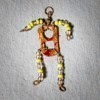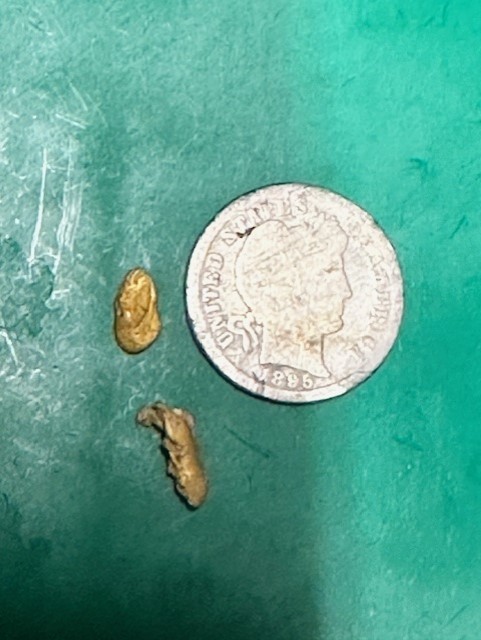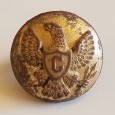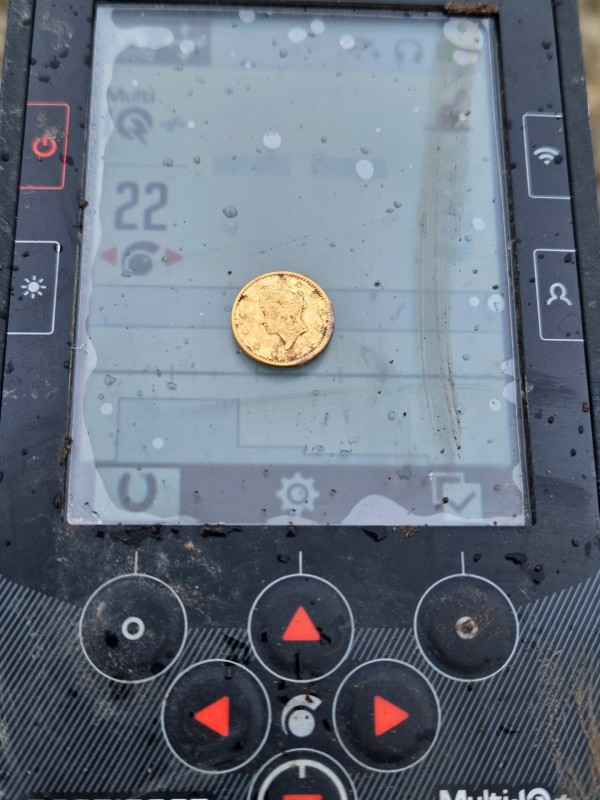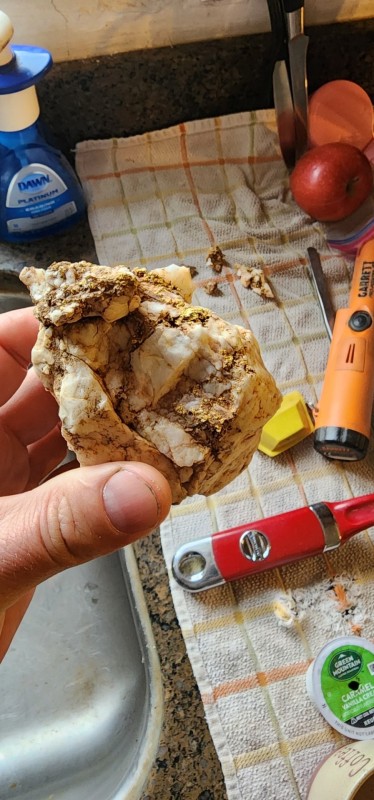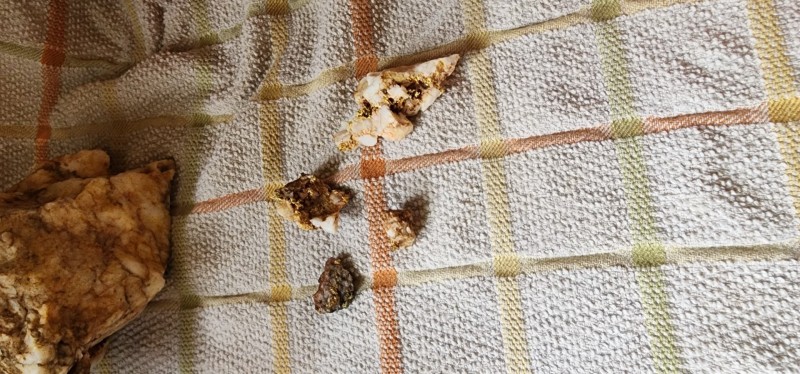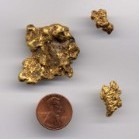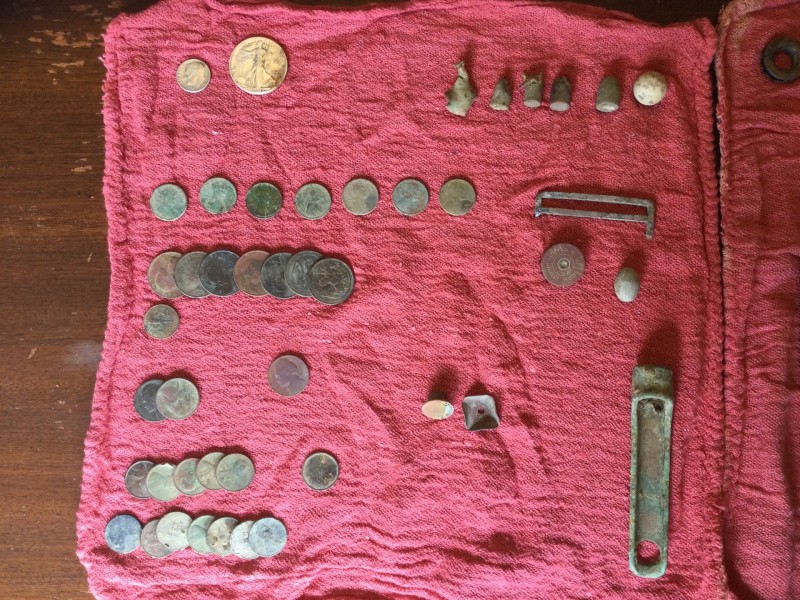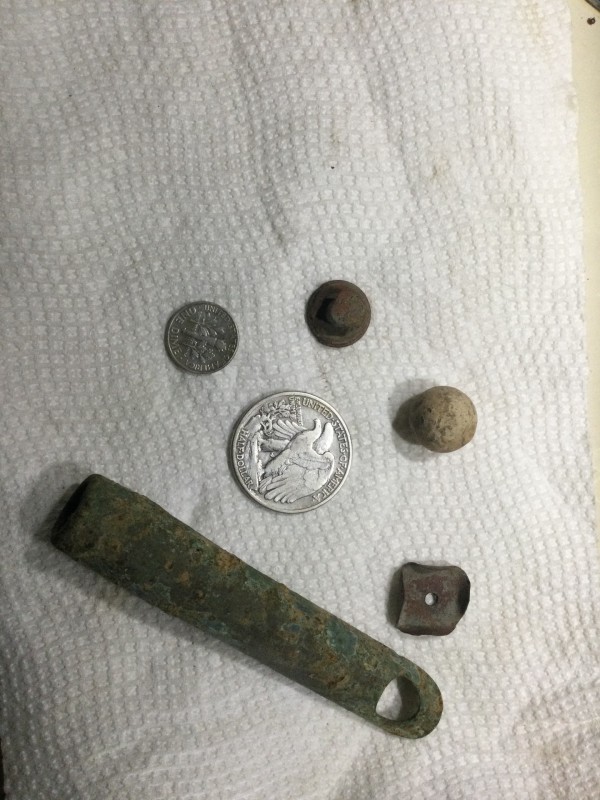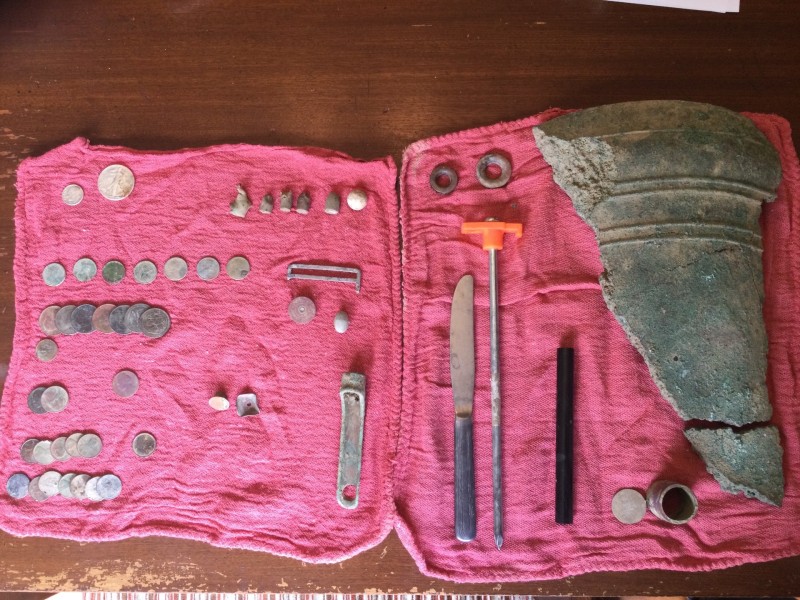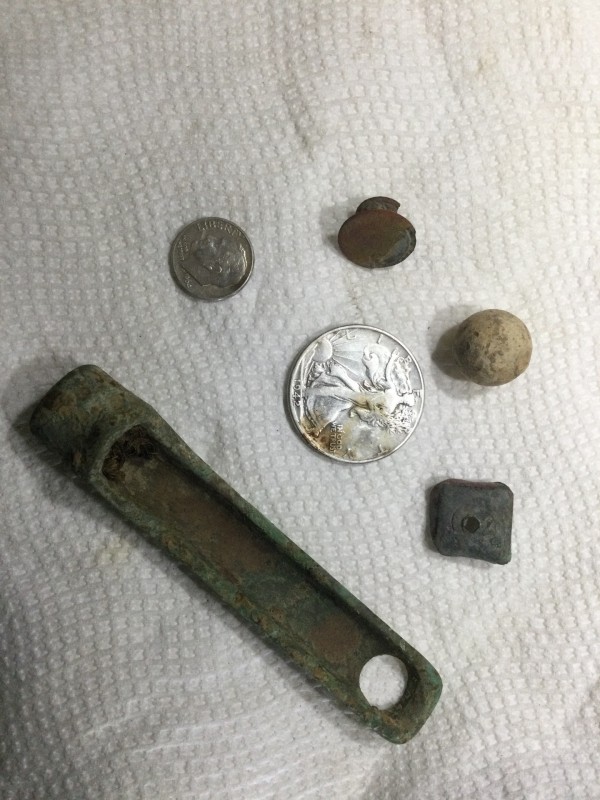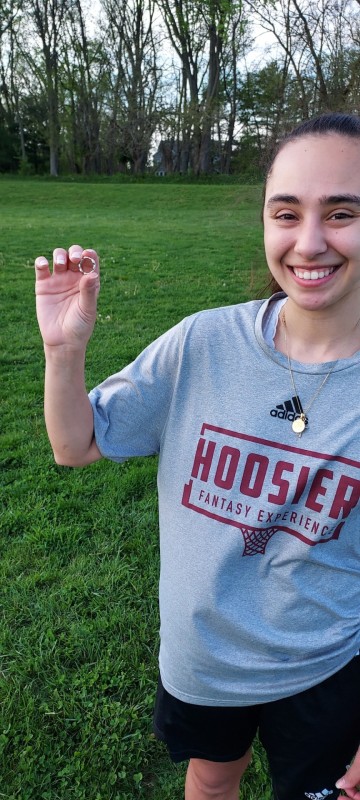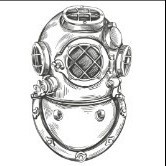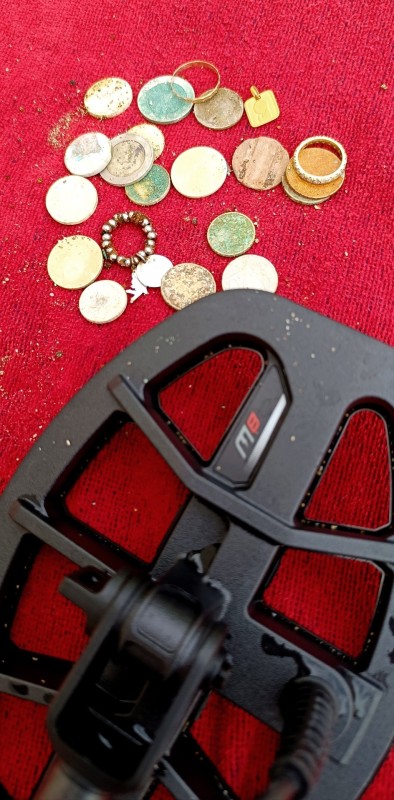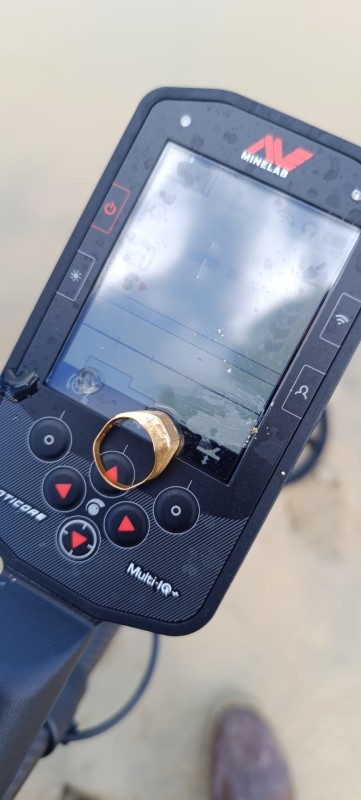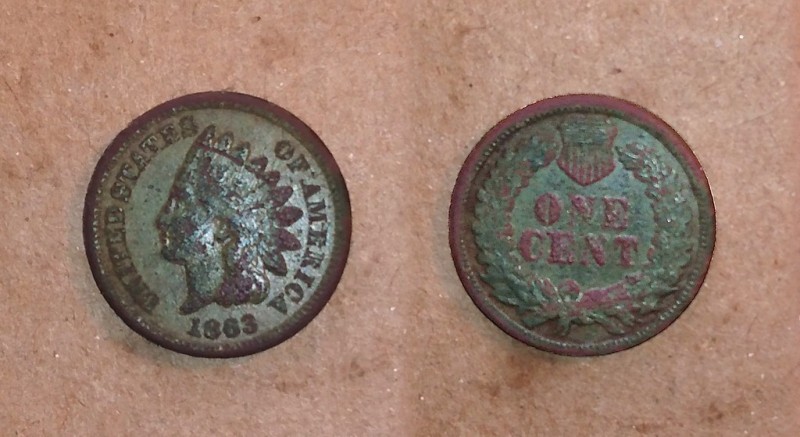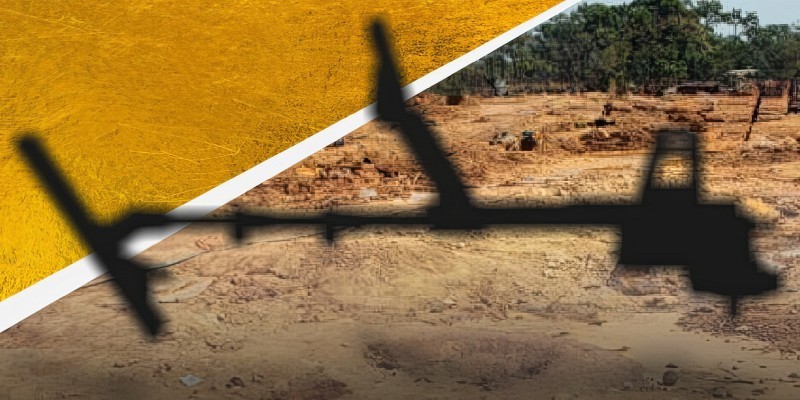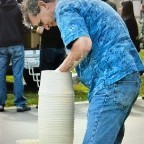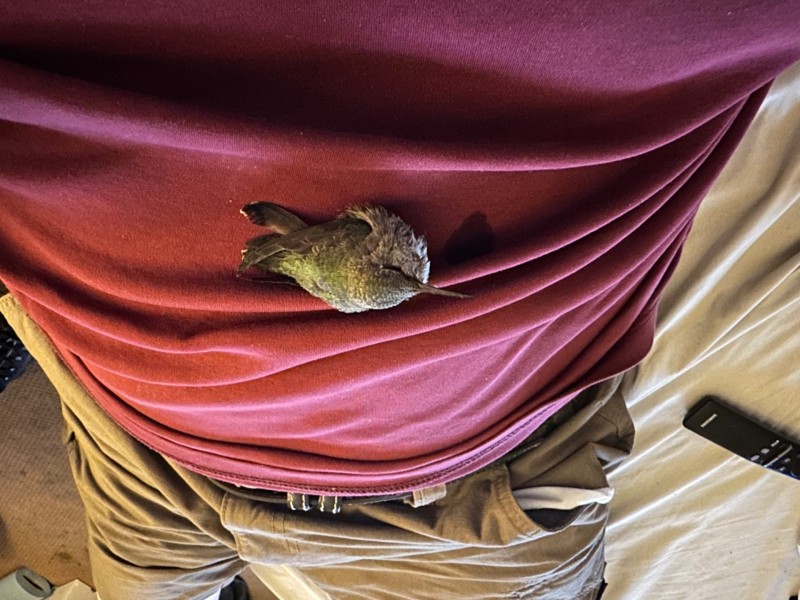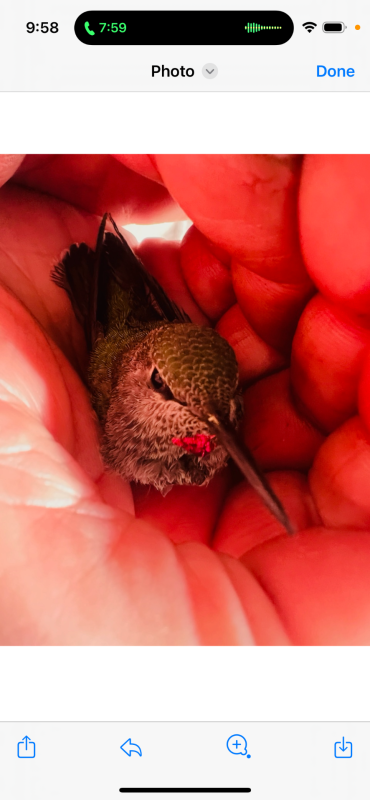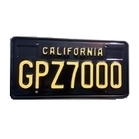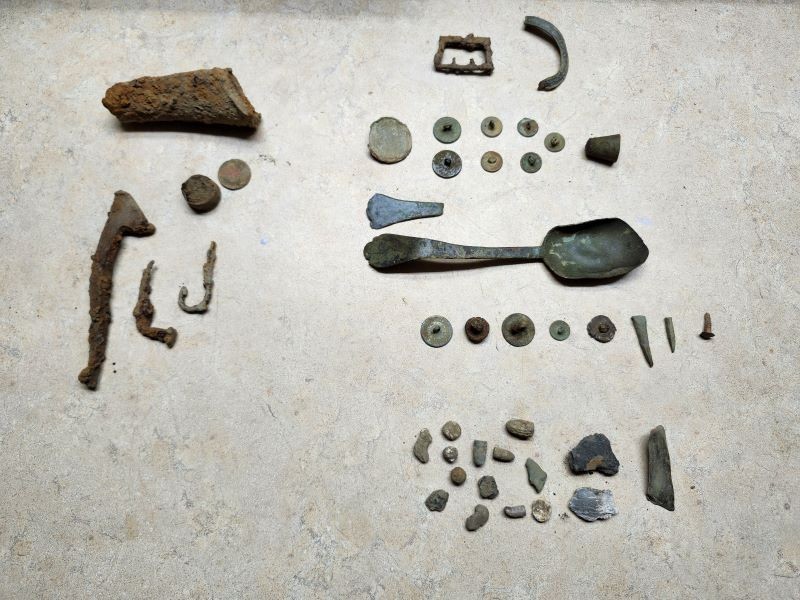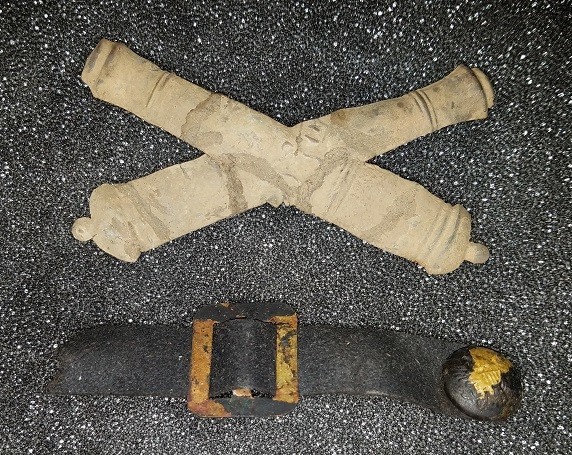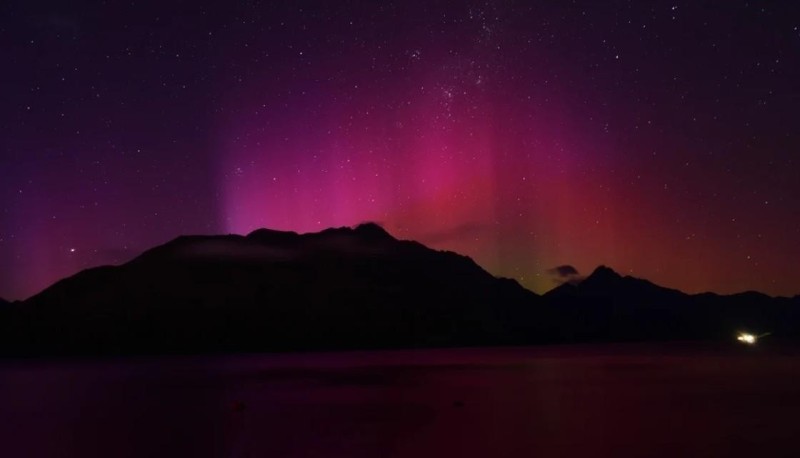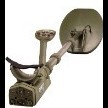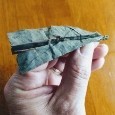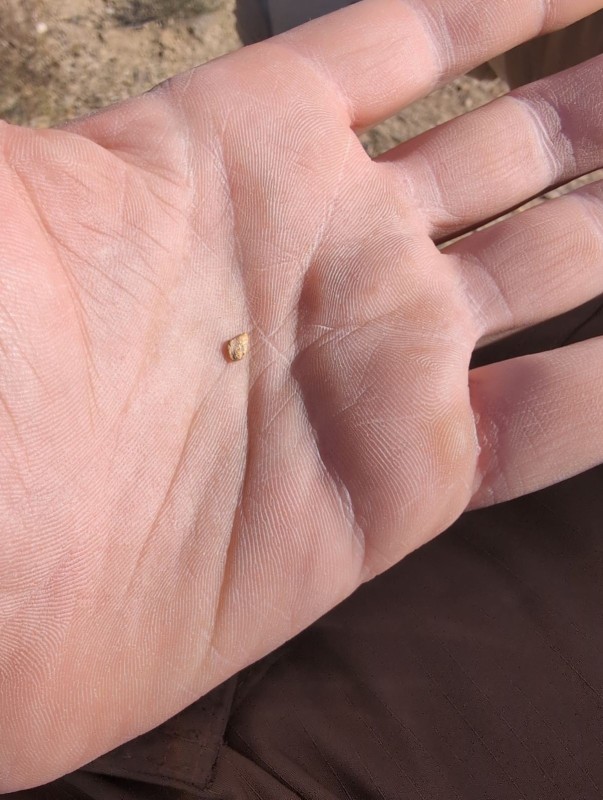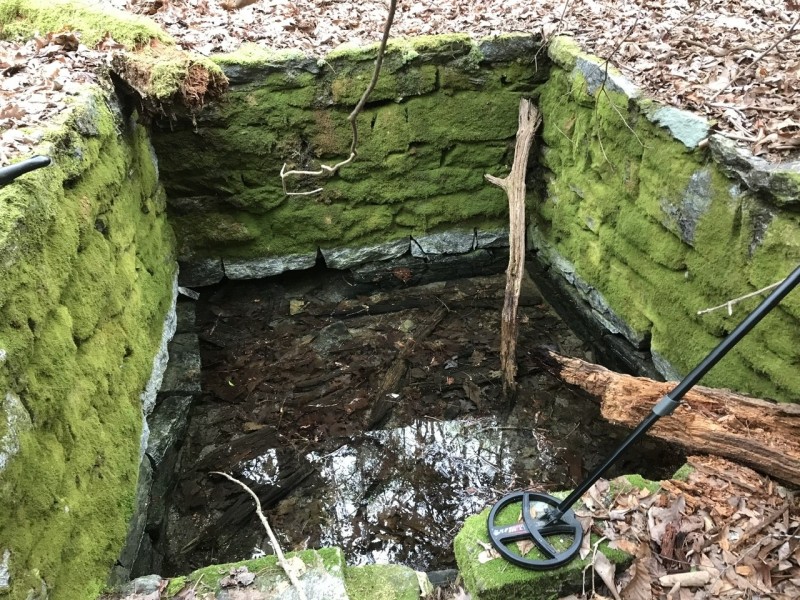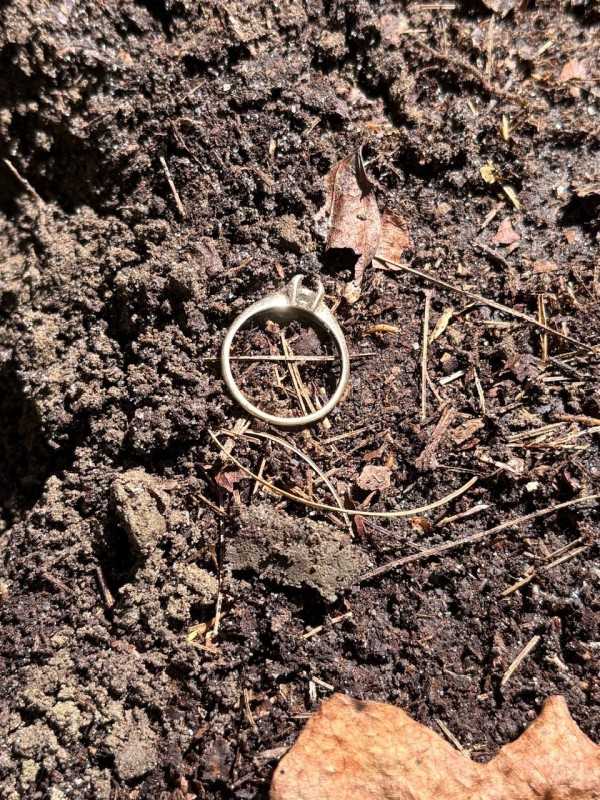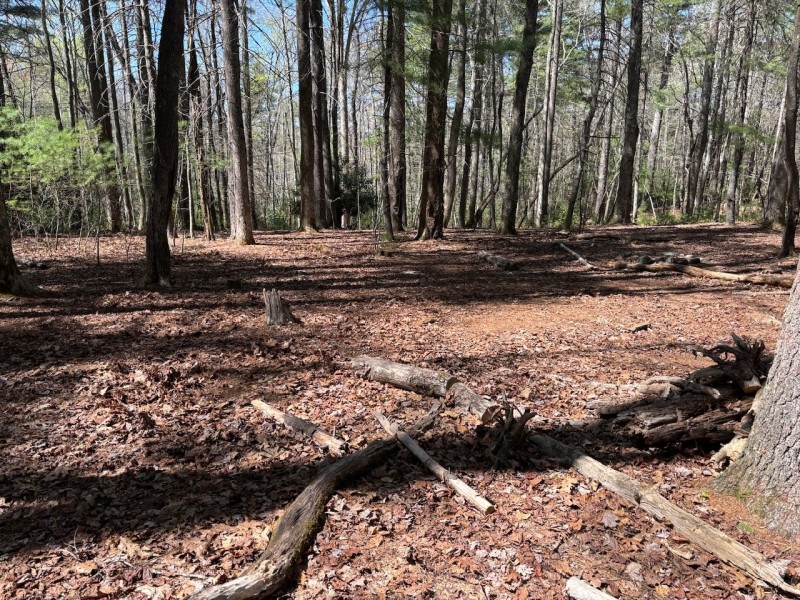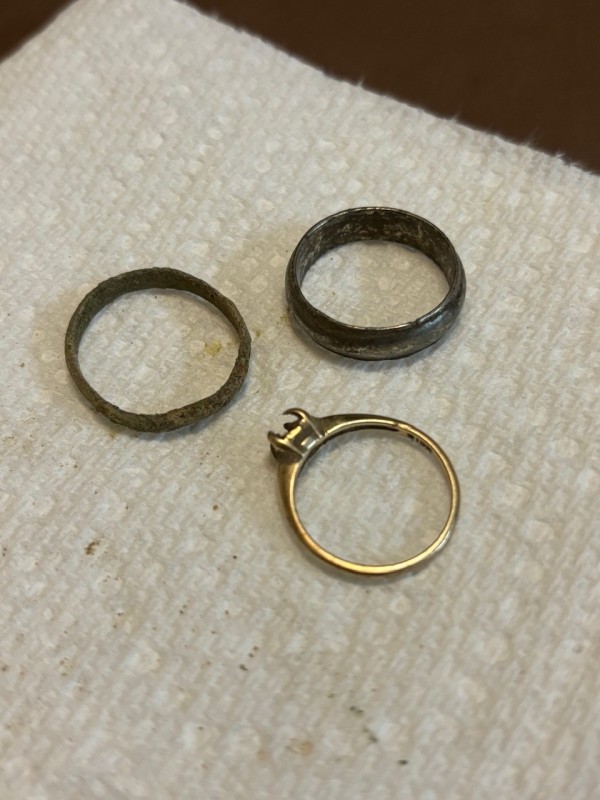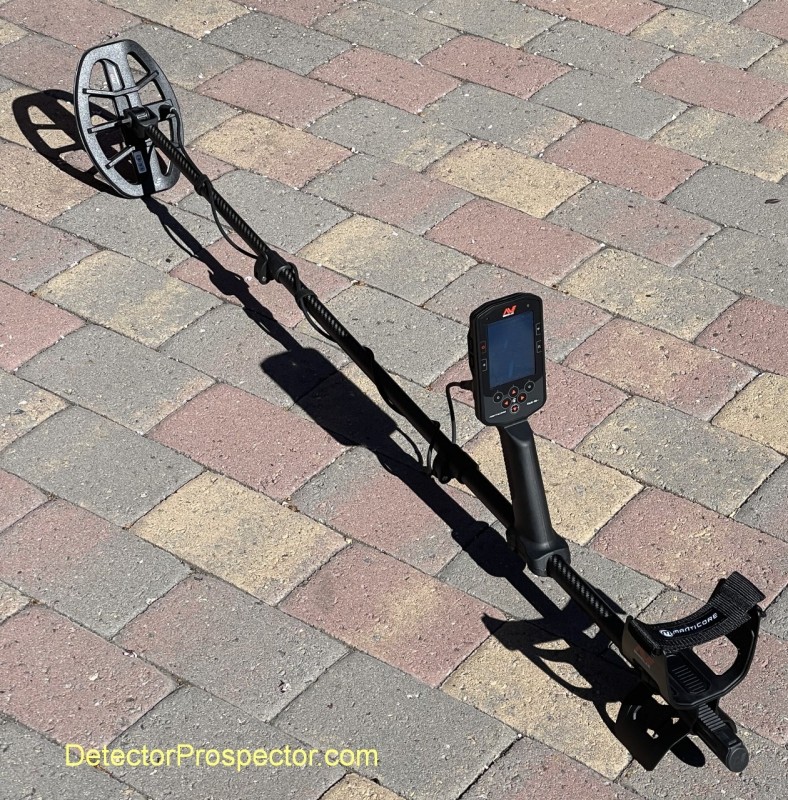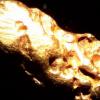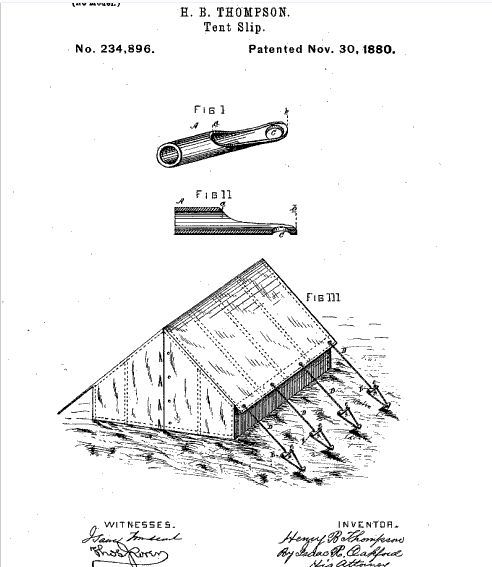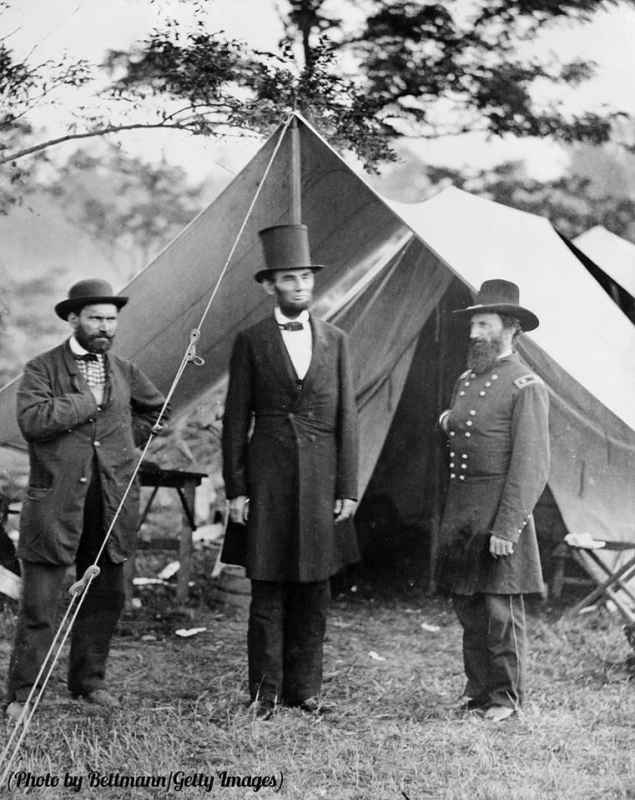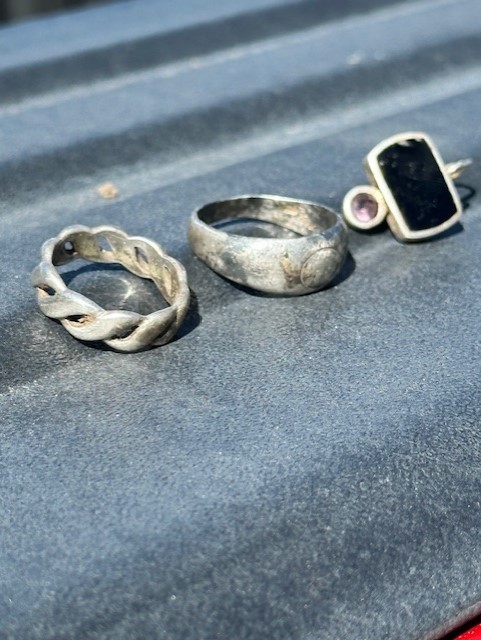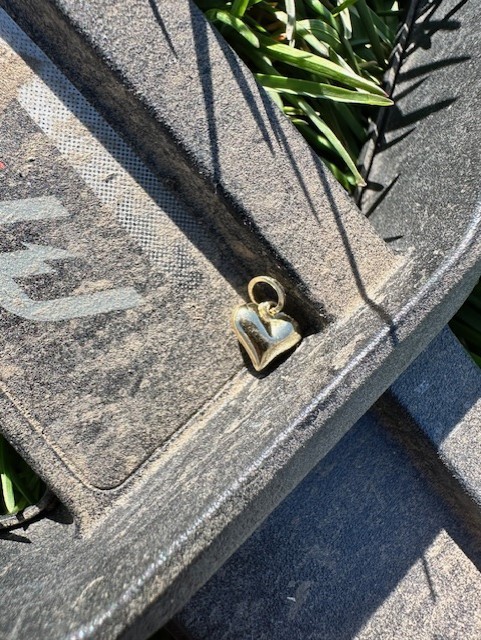Leaderboard
Popular Content
Showing content with the highest reputation since 04/17/2024 in all areas
-
34 points
-
A few weeks back my buddy and I braved a snow storm to get to a site that had an open window of opportunity. If we didn't go now we wouldn't be able to get back in until early June because of ranch activity. When we arrived there at 9 am there was 1" of snow on the ground and the storm had subsided. I had both the Deus 2 and Manticore with me but decided to start off with the Manticore and 11" coil. Manticore settings were AT General, 1 region all tones, recovery 5, sensitivity 22, stock ferrous limits, normal audio with a simple profile. Worst part about hunting snow covered ground is the build up you get on the coil, requiring cleaning every few minutes. We hunted for a few hours and for the most part finds were few and far between. I think I had a few small cuff buttons and a percussion cap in my pouch. At about 1 pm the snow started to fall again, so we decided to call it and work our way back to the truck. As I rounded a bush I got a solid 24 on the Manticore and in my mind I thought this could be a gold coin, knowing from testing that the type 1 $1 comes up 23-24. As I was digging the hole I heard thumping and brush crashing to my left to see a moose running past me, stopping just long enough to take a look at me. Taking out a few shovel fulls of soil, the edge of the 1850 $1 gold coin was visible in one of the dirt clods and came from a depth of about 7 inches. I called my buddy over to take a look and take pictures as I broke it from the dirt and put some water on it. Turns out it was worth braving the elements. For those interested, the ID for US gold coins on the Manticore are Type 1 $1 23-24 Type 2 & 3 $1 20-21 $2 1/2 37-38 $5 50-51 $10 65-66 $20 76-78.24 points
-
After owning the axiom for about 8months and only using monos with great success I decided to treat myself in a trashy site to only digging non ferrous targets and hey it worked! In middle of about 20 pieces of trash I could clearly hear something shining thru, low and behold 10 or so beautiful gold pieces. Half went with a friend that was with me, my half in the picture. Ended up digging every target in the pike for 2 day as I thought we were on some high grade ore but all the gold was sitting right on top with lots of trash.lol22 points
-
I recently obtained permission for my club to hunt a sizable piece of property with historical group usage going back over 100 years. Over 40 of us showed up on the designated day. I heard several people say their first signal of the day was a silver dime! By the afternoon, I was getting a little discouraged with a wheat or two, some bullets, a fishing weight and a couple modern coins. I had also found a 12 pound section of an old brass pot or urn. Based on the radius of curvature, that thing must have been huge, not to mention extremely heavy! I had to make a special trip back to the car for that thing, as it was too heavy to carry with me all day. I finally broke the silver drought with a 64 Rosie after lunch. A while after that, another club member hunting near me found a beautiful Ben Franklin silver half. I told him it was gorgeous, and mentioned I had never found a half outside a seeded hunt - let alone a silver one. He encouraged me and said I will find one sooner or later and it might be a Walker or even a Barber. As he moved on, I hit a nail patch and decided to slow down and go over it. I was using my Deus 2 with the 11x13 coil - not optimum for dense nails, but I wasn’t going back to the car for the 9” that late in the day. After a little comparison, I switched to the Tekkna program. From what I have read, it might not be the best program for a large coil and dense ferrous targets, but it was more stable and much quieter in the dense nails than my custom program. After walking two lines through the nails, I had recovered four wheats and a worn cuff link (?), and figured there may be more hiding. Sure enough, I hit a nice mid-90’s signal that was so strong it had to be a can lid or the like. But, with multiple nearby wheats, I was digging it anyway. About three inches down, I caught my breath as I saw a silver disk emerge. Surely, it was an aluminum punch like another one I had found, but then I saw the reeding on the edge. I was flabbergasted to see Lady Liberty emerge from the dirt! Despite the dense iron (based on the stain, it would appear the coin was actually in contact with iron) using Tekkna and the 11x13 worked well. I would say this is the best coin I have ever found! In hindsight, I wonder what would have happened if my club member had said I would find a $20 gold piece…🤪 I also found a maple tree tap and what I think is a musket ball. The wheats range from 1911 through the 1950’s, with only the 1920’s not represented. We are working on permission to go back again!16 points
-
YouTube is very problematic for newbies. There is good stuff and bad stuff. Sometimes the boring guy has the best info, and the entertaining guy spreads misinformation, but the entertaining guy gets the eyeballs. If you already know the subject well you can sort out what is what real fast, but for newbies they simply can't spot the bad information as they don't know any better. I can swear to one thing. Nobody taught me how to metal detect. I just got a detector and went detecting. I read the manual. I experimented on different targets with different settings. I learned what worked and what did not. I do the same to this very day. All you need is a metal detector and some hours behind the wheel plus an inquistive mind. It's really not rocket science. Experience is the best teacher.16 points
-
Nugget Shooter forum members welcome for sure! Just a friendly reminder for those not used to how this forum works…. it is an absolutely zero politics zone. I don’t warn I just delete. I set this place up as a refuge from all that and if people want it there are plenty of other places to get it. This forum by design sticks to dry boring topics like gold prospecting and metal detecting.14 points
-
The young lady below lost her favorite sterling silver ring on a sports field playing lacrosse a couple days ago. Once she demonstrated approximately where she was on the field and where/how she was throwing the ball when the ring popped off, it look less than a minute to find it. Right on the surface under the unmowed grass, and multi-repeat 42/43 on the Legend. It took longer to power on and set up the machine than it did to find the ring!13 points
-
Last monday I finally started the test phase with the Manticore and the M8 underwater. After a minimum of settings adaptation, I recovered three small and light pieces for a total amount of almost 6 grams in total. Tuesday underwater again and Wednesday wetsand workout, nothing to register...Until today on the wetsand...I was again with the M11 and after the usual coins and an unexpected sinker on the slope, minutes after a solid 17 screaming to dig it. It was a 4.45g 18k piece. What else can I say...Jeez...If there's something left, this is the most similar tool to a vacuum cleaner 😅13 points
-
I open this topic for new users of the Garrett Apex and the Pro-Pointer, a.k.a. "Carrott". There might be something experienced operators might want to ask as well. I had originally planned on writing a huge intense review about Apex features and detail the operation of it, but I think it might be less boring and more productive if users asked me specific questions they have. I have owned the Apex now for 4 years and really enjoy using it. I'm not a water hunter, nor gold prospector... I hunt mostly coins, flat buttons, jewelry, and relics in the oldest locations I can find. If that interests you, I will be happy to share what I know about the Apex and land metal detecting in general. Yesterday (4/16), on a permission I have been hunting (more like beating to death) for 13 years now, the law of diminishing returns is starting to become evident. So I spent the day hunting in random directions over my colonial era crop field... hunting more slowly, hoping to find anything at all actually. So I relaxed a little and removed some pressure from myself by not competing with myself! I have found everything imaginable here from coins, buttons, and relics lost by the people who plowed these fields long ago... Right on through to items people are still losing today. Towards the end of day, expecting to go home empty-handed yet again, I hunted near a good-sized Hickory tree in the middle of the field which likely presented an obstacle to one of farmers long ago. It was probably left standing anyway because it was at the crest of a hill and possibly for its never ending crop of nuts. My target signal (only 8 feet inside the shade from the tree) sounded surface loud. The pitch bounced from "foil to pull-tab", back and forth. Walking around the target, I was able to somewhat isolate the "60-ish from the 40-ish" conductive ID, making it more stable and repeatable in the higher direction. A quick glance of the depth scale in the custom search mode I use showed 3 bars or only 6". I ran my iron technique in Pinpoint and proved the target not to be large iron at least. There were plenty of little iron "grunts" around the location though. OK I thought, one more out of context pull-tab or gnarly foil wad and I'll hit the road for home! Folding a plug back, the "Carrott" started to "Bugs Bunny" in the bottom of the hole... A little more dirt and it's out! I checked the hole depth with the embossed scale on the side of the pinpointer... 6" nearly on the mark. But no pull-tab or foil... It was an 1863 cupro-nickel Indian! Normally the "Fatty's" are oxidized into date oblivion, but this ground was kind. This penny still had some light green patina in the recesses. It must have been dropped not too long after circulation. It was in the same era of a rare campaign button I once found in the other end of this field. Not far from my dig, I got another signal that read "51". I was hoping for possibly a "Shield" nickel, only to be disappointed with a 1981 Jefferson at about the same depth as the Indian! 🙂 Hopefully this little (true) story will invite some questions about how I use and adjust the Apex and get us started!12 points
-
11 points
-
11 points
-
Thanks Chuck. Yes research is a big part of success. But most of these camps I hunt have been hit for decades before I ever got to them. Maybe a pocket of untouched relics here and there where I found a bunch of stuff concentrated. But more importantly, the people that hit the areas were after the high conductive targets. Big bullets, big buttons and silver coins are all but gone. Plenty of the low conductors left if you don't mind sorting through the .22 brass, .22 lead and percussion caps. Generally speaking, officers were paid in gold and enlisted men paid in silver. Enlisted men's pay in the 1850's was about $11 a month if I remember correctly. Whereas an officer would earn anywhere from $30-40 a month.11 points
-
I don't see why anyone would think prospectors don't need ferrous disc. A gold PI is typically going to be designed to hit the tiniest bits possible and that can also mean tiny ferrous bits. A relic PI might be more tuned to hit bullet size targets at max depth while being less sensitive to every tiny bit of ferrous trash. In theory though you can do both in one detector so interesting to see why they feel the need for two models. It could be nothing more than what coil the machine comes with. We have no idea what the detector really looks like but let's go with the fuzzy profile as being real. Standard configuration with collapsing three piece rod, fairly large underarm battery. Big question - it it submersible? Beach hunters will be disappointed once again if the answer is no.11 points
-
No doubt just what Minelab was thinking. So far with Storm it has been just like a Storm in the distance - lots of noise but nothing happening. I hate these long drawn out tease releases.11 points
-
Looking at social media a lot of people are getting very annoyed at Garrett and their marketing method for the Storm, people really don't appreciate these hype up marketing then nothing type releases. It's turning people against them, people are choosing to buy competitors machines as they've waited and waited and it hasn't arrived, a lot of expectations were around the Anniversary celebrations for the release, that never happened so now expectations are it's a long way off or they would have done it then. What we do likely know though, is its name is the storm, with a nice little coil for the O in the name. The hats are a bit of a giveaway. I don't think the detector is going to be bumble bee yellow and black, it's blue for sure. I think the long lead up to releases is very damaging for a company to do, they may see it as it stops loyal customers buying another brand in the meantime knowing the Garrett is coming while they get the detector ready for release, but it looks to me like the opposite is happening as very few like the marketing method, and it's pushing them into buying other brands and some other brands are taking advantage of that sentiment with very good price reductions going on now. It went from initial excitement to annoyance about waiting.....10 points
-
Flat Spiral Wound Coils increase and concentrate the magnetic field near to the coil. The following four ten inch coils are designed with 2 mm Litz wire with number of turns needed to approximately meet the industry standard inductance of 300 microhenrys (uH). The flat spiral coil has 43 turns in a 3.39” band that leaves a 3.23” diameter center hole. There is another flat spiral coil that has 0.1 mm spacing between turns. It has 55 turns that leaves a 1” diameter center hole. The 5x5 stacked coil has 24 turns in a 0.4” square band that leaves a 9.2” diameter center hole. The cylinder coil has 16.5 vertical stacked turns in a 0.2” band that leaves a 9.8” diameter center hole. The magnetic unit of Tesla or milliteslas (mT) is named after Nikola Tesla. Examples are (5 mT) – the strength of a typical refrigerator magnet; (.05 mT) – the strength of the earth’s magnetic field on a compass. The attached chart shows that the magnetic field of spiral wound coils is strongest close to the coil and concentrates through the center hole of the flat windings. This provides exceptional results on small nuggets and sharp pinpointing within the center hole of the coil windings. Click on chart to expand it.10 points
-
Actually there was an anything goes sub-forum for years that finally got nuked as even Bill got fed up with it. That plus the “sooner or later” and “habitual offenders” is why I made the comment. Action here is immediate and more than once is a probable ban. I actually hate being a watchdog so the easiest solution is to get rid of those that need watching. I'm sorry, I'm not trying to be a jerk to new arrivals. I just don’t want anyone being caught unawares by my evil draconian oversight.10 points
-
9 points
-
He was on the ground near the pool negative edge a little hummingbird fledgling, we planned on just keeping an eye on it so it’d be safe from pigeons and geckles until it fell in the pool. My daughter rescued the poor little thing luckily it seems to be hanging in there. crossing fingers it makes it through the night. We will put him back out tomorrow and hope mom shows up. We called a rescue place too hope they return our call in the morning. this is gunna be a long night I think, lol I put him in a Dixie picnic paper bowl nest and set it on my nightstand cause they gotta eat every 20 to 30 minutes sat down on the bed and he was hanging by one foot off the side of the nest bowl heading in my direction, ha guess this is how it’s gonna be tonight anyway. shucks, it was cold…9 points
-
9 points
-
September 21 2002 Part Two These guys looked to be middle aged but it was getting hard to see clearly in the fading light. The sun had just set when they appeared out of nowhere. Clay hollered over to them and asked them where they were going but they ignored him and kept getting closer. They weren’t on a path directly towards our camp but were following the creek about 100 feet away. I stood up and shined my flashlight in their direction and asked them what they were doing. The one in the front turned toward me and said they were prospecting for gold. Mighty funny I thought as they weren’t carrying anything with them. Not even backpacks or shovels. I asked them where their gear was and all five of them stopped walking. I saw the one in front say something to the others and before a few seconds had passed two of them walked away down the creek and three of them cut up the floodplain north towards the base of the mountain. Then I heard one or two of those three trampling through the brush just above us to the north. They had us surrounded. Conor said he saw some side arms on them. Clay said he did as well. Jacob said they might have been watching us weigh the gold and waited until dark to make their move. It was almost as if they had walked up near enough to size us up. Jacob said that if it's trouble they want he will give it to them in spades. He had his old Thompson ready for action. I was thinking to myself that what the hell is all this? Have we gone back in time to the 1930’s ? None of us were ready to give up our gold. If they wanted a fight they would get one. TO BE CONTINUED ................9 points
-
Tomorrow night the family and I will be going on a camper van trip to New Zealand. It's not a gold trip but I have accepted an invitation to hunt a couple of days in the Queenstown area. That will be in the second half of the trip. I'll be with Simon and JW for a few hours to experience some of the mild soils I've been hearing about for years. There is so much to do in New Zealand before I get to Queenstown and on the ferry return. Seventeen days don't seem like enough now. I was not aware that it is about a thousand miles from Auckland. When you add in a ferry, some hot springs, a worm cave here and there, the Hobbit village and a train ride it eats up all your time. Maybe I'll have to go back but for now my kids have a chance to miss a bit of school here so I'm going. If any of you have some 'don't miss spots' please let me know and we might be able to stop.8 points
-
If I'm remembering what I learned in class correctly, this is where I'm supposed to say I found them down in the lake . - Dave8 points
-
This must be Minelab’s way of dealing with the competition, about 30% off of their top multi-freq. detector is quite rare of a sale for sure. Manticore $1199 about 30% off plus another 15% military off for those who served for a total of 45% off. Equinox $999 and also the veterans if you qualify. Free shipping and Oregon is a no tax state. Ron’s Detector’s 208-739-8079 rrlmmc@gmail.com Please support your local small dealers as we are going to be going to the wayside pretty soon with most companies going direct sales. With that being said I will always remember when Gerry, Doc’s and Rob were always the ones to ask technical questions as they usually had the answers.8 points
-
Decided to go with the 13 inch coil today at one of my cellar hole homesteads out in the woods. My plan was to use a couple of variations of the Tekkna program. I've been using it on my 9" coil and it keeps surprising me by sniffing out nonferrous targets at some heavily hunted sites. Wasn't really sure it would work well with the big coil with all the iron at this site but once again it surprised me with a handful of nonferrous finds. I started out with the "classic" version of Tekkna in Sensitive Full Tones. But the falsing got annoying fairly quickly so I switched to Tekkna General 4 Tones. With multi tones I can play with the tone bins so the falsing doesn't bug me as much. I didn't find anything special today but I dug 7 small buttons, and a thimble with the big coil. Also dug an iron chape. Don't find many made of iron. The partial shoe buckle frame next to it appears to have been in a fire or it is made from an odd alloy. The whole trifid spoon and the trifid spoon top peice were from the previous hunt using the 9" coil and Sensitive Full Tones Tekkna. That is a very late 1600s or very early 1700s spoon and the first complete one that I have found. Those buttons below the spoon were from the earlier hunt. For me, Full Tones is most affective on the mid tones and it has been a button killer over the years. It loves the small bits of lead and pewter as well. I still can't quite get my head around using all that Disc in Tekkna, but it is putting finds in my pouch from some tired sites. Lodge8 points
-
I am just scratching the surface as far as learning the Manticore, especially as far as how to work with the upper and lower ferrous limits and what the 2D screen is capable of. Since January 2024, I am at 34 US silver coins, 8 silver rings and 3 gold rings. All were found in public parks that I thought were on the verge of being hunted out by me and others using the Equinox 600/800 and were at least 7” deep in tough iron mineralized dirt.8 points
-
Said like a true detector addict in denial, Simon. And being one myself, I don’t believe a word of it.8 points
-
8 points
-
After owning and loving 5 Equinox 600/800s, I thought I just couldn't survive without one. Now I own the Legend and Manticore. I simply do not miss my Equinox 600/800s at all. I don't even think about buying another Equinox or have the slightest bit of seller's remorse. The Legend and Manticore easily out perform the Equinox 600/800 where I detect the most and I don't have to worry about leaking and build quality either.8 points
-
The Legend Beast Mode Demonstration FB: https://www.facebook.com/noktadetectors/posts/pfbid02FoBkfoE1LcNycut7ttJGorTMvVEjJ26PWrAfQ9DrPy5dH7ogUdwL2EkCD6NaRGjCl?__cft__[0]=AZWFP5TjsgWR-2-p2CgU58PvXg3OYaMVrETfyTYFVpoPZUT4Uu0kg51-Xa1_SXZtLnVt-LNAR370Zo-3EBFyNSmc4Lm50MPEAgz8FVybnnLo0PiVRuszjPkI84KJvNJYOpAyJbtWnhXPVzuDHWtRqFjkyPSxgFh-ZJI8UtAjrbXHYZSN4GWUMUX14Ld_FIYIrUUYDLpvxhe0pN-P5AZyzAJ_&__tn__=%2CO%2CP-R YouTube:8 points
-
I relic and coin hunt in my local area mostly at old homesites. I’ve done this type hunting for about 40 years when time and family life allowed for it. My first factory made detector was a Garrett back in the ‘80’s. I enjoy using both Apex detector and D2-9”. I bought the Apex soon after it was released. I had previously owned a ML Sovereign so I knew the virtues of SMF machines. More recently , the GTI-2500 was nice technology, but the Apex felt like heaven to my arm to swing especially since I’m older. I learned the Apex and could hardly wait for each day I could go out and use it. I still like it and use it today, anywhere the soil conditions allow. Being rechargeable, having wireless headphones and 5 tones, SMF like the Sovereign, but so much lighter than my old machines was and is a win-win for me. I will use the D2 when the soil conditions are tougher, and like that I can tweak a few settings to the soil conditions. I wish I could do even a subset of similar adjustments with the Apex as it would be the icing on the cake for me. I eagerly await the “Storm” like a lot of other Garrett fans, and I hope they address some of the (lack of) adjustability of the Apex. Meanwhile I’ll keep using and enjoying with both machines. Let’s hope it the Storm appears soon.7 points
-
September 22 2002 Part Two Conor and I were working gravels through the tom when I got a call on my walkie talkie. It was Jacob and he wanted me to come up to the dig site. He said he had something to show me. When I got up there he had shut down the excavator and was standing near the edge of the giant hole he had been expanding. He pointed to the west side of the pit and said he had struck a solid wall of sloping bedrock. He had found the lateral boundaries of the rich material. Then he told me that the bedrock continued to drop in that area with no sign of a bottom. He showed me a test pan from and there was still plenty of coarse gold there. The area of the second stage drop zone was about 20 feet by 20 feet. He figured the best gold was still to be found wherever the bottom of that drop contacted bedrock. There was no way to tell how deep he would need to dig. He had a nice platform sitting on the first area of bedrock to start the next section. He would be able to go down about 20 to 25 feet from there without expanding his footprint. If the bedrock was still deeper than that he would need to back out and come back in from the south side by digging what would amount to a massive trench that would slope downward deep into the channel. If that was needed it might require timbering the sides for safety or digging a very wide cut. In other words, a big project. All we could do was hope he struck bedrock from where he was presently stationed. TO BE CONTINUED ..............7 points
-
At least where I detect, the Legend if setup for the ground conditions can hit and identify 10" coin sized targets no matter what conductivity they are. Much deeper than that and the targets (similar to the Nox 600/800) start to sound like iron. The Deep Target feature just released in V1.14 may help with that. My Manticore will also tend towards iron in the higher iron mineralized dirt that I hunt in especially on lower and mid conductive coin sized targets at around 10". Anyone just getting 8" max using their Legend must be hunting with iron rejected and with the iron filter on the default 8 setting, one of the smaller coils and/or they have the worst dirt on the planet. There are lots of absolute newbies to detecting giving their opinions about the Legend on Facebook and even making YouTube videos. Some of what they are saying is leaking onto the forums. They obviously don't know much about detecting yet, especially deep target detecting and I disregard most of what they are claiming. I like the name for the Deep Target feature. For me it really helps to clean up the iron/not iron choice on 8 to 10" deep ferrous and non-ferrous targets if I keep the setting on 2. In testing on 8" test garden coin sized targets and on actual 8" deep wild targets it has worked great. So far, I have gotten more information and cleaner hits using it on those targets than the Manticore gives me in ATG All Metal using 5 tones, in places where I really need good information.7 points
-
Understandable, very hard to see NZ in that amount of time, you'll be in a mad rush, I could spend 2 weeks just in my area and not run out of stuff to do as a tourist and many do, that's a pretty normal stay time around here. Always check the sky at night, especially when outside of cities on the South Island, the Aurora is very active at the moment, 2 nights ago taken from Queenstown Botanical Gardens.7 points
-
September 21 2002 Part Three The only place we had to go would be back into the creek and they had quickly gotten the high ground and to the north as well as blocking us east and west. I hollered out and asked them what they wanted. There was only silence. Then I heard Jacob holler out. His voice was loud and deep and enough to scare off a grizzly. He told them that if they wanted a gun fight then they would get one. He called them every foul name I had ever heard and maybe a few others I hadn’t heard. He told them we were well armed and would shoot them to pieces and bury them in a hole on the mountain where no one would ever find them. One of the thugs hollered back to Jacob saying we misunderstood what they were doing and they only wanted to talk with us about possibly leasing a spot to mine on our claims. I hollered out that they had a mighty suspicious way of approaching us about a lease. Then I told them we were not interested and to get off our mine. Once again there was complete silence. Suddenly, without warning, Jacob opened up with his Thompson. He discharged an entire magazine up into the woods in the direction where the voice had come from. The rest of us opened up with our guns but kept our shots high. It sounded like a war was on. They did not return fire and all was quiet. Once again Jacob challenged them to fight like men. I heard some rustling of bushes up to the north and it sounded like they were leaving. We all fired more rounds up that way and also a few to the east and west but kept them high. Then it got quiet again. I was thinking they might not have realized what they were up against but now they knew. Would they leave or come back? TO BE CONTINUED ................. .7 points
-
I'm finally going to spend a day on this permission tomorrow. It will be my first time out in a known gold bearing area. I'm really looking forward to it. I'm heading there with high hopes, and will probably leave with a big dose of reality. Either way, my wife and I will have a great time. I'll update with any good finds.7 points
-
I budgeted for a new Detector this year and was waiting to see what the Garrett Storm might be all about. With $500 off and a 15% Veteran discount I jumped on a new Manticore today. I then got to wondering if Minelab has made a "pre-emptive" strike against Garrett and the upcoming Storm with offering the Manticore at such a great price. Time will tell I guess. In the meantime I now have one Detector for each day of the week 🙂 Sure glad the wife enjoys detecting as much as I do.7 points
-
First we had Algoforce but now the real battle starts in pulse induction, with Nokta likely to set new price/performance ratios i.e. bang for the buck. "Join our naming competition and get a chance to win one of our future Pulse Induction machines! One designed for gold prospecting and another one for relic hunting! These detectors will redefine affordability and performance for you to break free from the grip of overpriced alternatives!" ENTER CONTEST Deadline April 30th7 points
-
I agree, the tech is definitely approaching it's ceiling, and I've been very happy with my EQ800 for the last 5.5 years. My main complaints involved build quality issues much more so than performance. To make a long story short, I needed to replace my 800 control pod two years ago, so I decided this year was the year to look at moving on to something different, while I could still get good resale on the machine with a year of warranty left. I looked at the EQ900, but it didn't seem to offer enough (if any) improvement for the cost, and I didn't like some of the reviews from other detectorists that I trust - a few of them were previous 800 owners, and several sold off their 900s or went back to the 800. The Manitcore was appealing but I couldn't justify the cost for the potentially minimal gain in performance. I decided to try a Legend starting in January - I wasn't expecting an increase in performance, just an increase in build quality and roughly equivalent performance, and at a much better price. That's essentially what I got for the investment, and the Legend works very well - though I'd make the case that it's performance isn't quite the same in some areas that are important to me, and I'm not convinced (after almost 100 hours) that it's the machine for me. Anyways, the price drop on the Manticore was enough to entice me - if it was at this price point in January, I would have bought it over the Legend without a second thought. Pulled the trigger last night. Once it arrives, I'll suddenly have three detectors when I've always just had one, and I'll suddenly have an irate wife! But if the Manticore provides better build and even marginal gains over the EQ800 as it seems to promise, then it'll be worth it to me - I'll finally part with the 800, and the Legend will likely get sold as well.7 points
-
A cold NW wind today, however, had a good deep river valley today to protect me. Even got some snow......adds to the adventure. I used the Geo Highbanker. Being that I run it with a battery, I added some tips today. Enjoy the pics. It all fits in a plastic fishing sled, that will float for easy transportation. Got my highbanker up and running. Tune your machine like a concert piano, and it will capture most of the gold in the first couple of drop riffles. The lithium ion batteries manual says you could damage the battery if you short it out. I use an electric control to manage the flow, and it has a fuse in case it does short out. The PVC plastic units are light, making it easy to move to a new location. After my first cleanup, I was happy to see some gold in the pan. I added some miner's moss with backing into the hopper to protect it from all the abuse I give it and to catch a bit of gold. And that pretty well wraps up today's adventure!7 points
-
I killed many,many bad men with one of those, I also robbed banks and stage coaches. and absolutely no mortal man could out draw me, but nothing matched my famous shot when I got the giant rattlesnake in the eye at 300 paces. The next day was even more exciting. Thanks for the memories.6 points
-
It was a good training and good company. It was a pleasure getting to get acquainted with you UT Dave and everyone else that attended. Had a blast myself. I would recommend this for anyone that wants to learn about this hobby, or even people that have a good foundation and want more specialized training. Wasn't my first nugget but I managed to scare this one out of the ground, I mean middle of the lake....6 points
-
I live on the property of a 1400 acre conference center that also has two summer camps for kids. Up on the mountain behind my house is a former camping area. There’s also an old spring up there where I’ve found old relics and two silver dimes. The camping area probably hasn’t been used in at least 20 years so there’s older stuff mixed in with newer stuff. I hiked up there Saturday afternoon determined to find something good. I’ve hit this area quite a few times, but I never really scoured the camping area that hard. I immediately stared hitting some modern clad and then I got a solid 57 using the Tekkna program. About two inches down was a 1.43 gram 10k ring! Soon after that I hit a shiny silvery looking ring (not silver😧), and then not long after that what looks like an old copper wedding band. Here’s some pics. The pic of the spring was taken back in 2022 when I discovered it.6 points
-
6 points
-
From what I have read the rope tensioners from the Civil War were made of wood, here's a patent for the metal ones that dates 1880. Civil War era rope tensioners were as mentioned made of wood and usually in the shape of a dog bone, some can be seen in this photo of Abe Lincoln in a Civil War camp at the Battlefield of Antietam, Maryland6 points
-
Finally! First we had Algoforce but now the real battle starts in pulse induction, with Nokta likely to set new price/performance ratios i.e. bang for the buck. "Join our naming competition and get a chance to win one of our future Pulse Induction machines! One designed for gold prospecting and another one for relic hunting! These detectors will redefine affordability and performance for you to break free from the grip of overpriced alternatives!" ENTER CONTEST Deadline April 30th6 points
-
Not sure what makes the D2 not relaxing or difficult. Once you set it up it's a turn on and go machine. Actually one of the easiest machines to run. 5 tone pwm in single frequency is pretty easy to follow. I often use 2 tone or 5 tone when relic hunting and full tone square for coin/jewelry. D2 does have a good advantage of being able to range the smf as well as run it in a wide range of single frequencies which makes it incredibly versatile. I always wanted an F75 but weight is a downside, D2 has me spoiled 🙂6 points
-
I'm a mostly park dirt jewelry and coin, old site relic hunter. The M-15 is the least used of the three Manticore coils for me. But, in the situations it is called for, it's pretty sweet. I use it mostly for parks that aren't too trashy. Easy turf contact swinging with great coverage. For me, in my dirt, I can't really say I've seen a depth increase over the M-11. Maybe, just a tiny bit, maybe. But the coverage is awesome. It pinpoints surprisingly well, which for me in a park setting is important too. Like I say, the least used of the three, for me. But, glad I have it when I want to use it. Recent three silver park hunt with the M-15. And it is also surprisingly sensitive to smaller bits. This is a tiny .25 gram 14k charm I found the next day after the three silvers, in the same park. - Dave6 points
-
6 points
-
Not in the journal : Comparing permitting & Plans of Operation from back then to now - man, have times changed. No politics here of course, just the process. Everything is slower and more detailed. As I was saying back in the Winter, I am attempting to get back to doing some mining on those claims again. I filed paperwork and need to transfer some water licenses out of a lessee's name and into mine. However, I was told I need to start the process over from scratch. Not a big deal but just time consuming. All of the environmental studies need to be done again as well. More time. I have put in a plan for an area of virgin gravels we tested back in 2019. They are 3000 ft from the north/south running creek I talked about in the journal. I have used two pumps hooked in series to get water over there before from a pond but that pond dries up in Summer. That was a 2000 ft deal with a 100 foot climb in elevation before the ground dropped back downhill again. The creek will be a 150 ft climb in elevation until it goes back downhill the last 800 ft. Should be interesting. Just based on what experience with pumps I have I am thinking three or maybe four pumps in series will get the job done. I am talking 3 inch pumps. This time around I will use foot valves as well. In 2019 there were no foot valves and every morning the water lines had to be purged so the pumps could start pushing water without much back pressure. Purging pumps first thing in the morning means taking the caps off the top and letting the back pressure blow water 30 feet into the air while you take a cold shower in 45 degree air. Not a fun way to start your day LOL. I'm smarter now - I think. I figure to looses 2/3 of the gallons per hour the pumps are rated for but that's ok as they will just need to keep a big holding pond replenished as needed. I am also delving into the idea of using a small electric water pump to run continuously. I have been talking with a person who suggested this idea and it would be much easier. When I put in plans I throw everything in there just in case and that is something I learned the hard way.6 points



